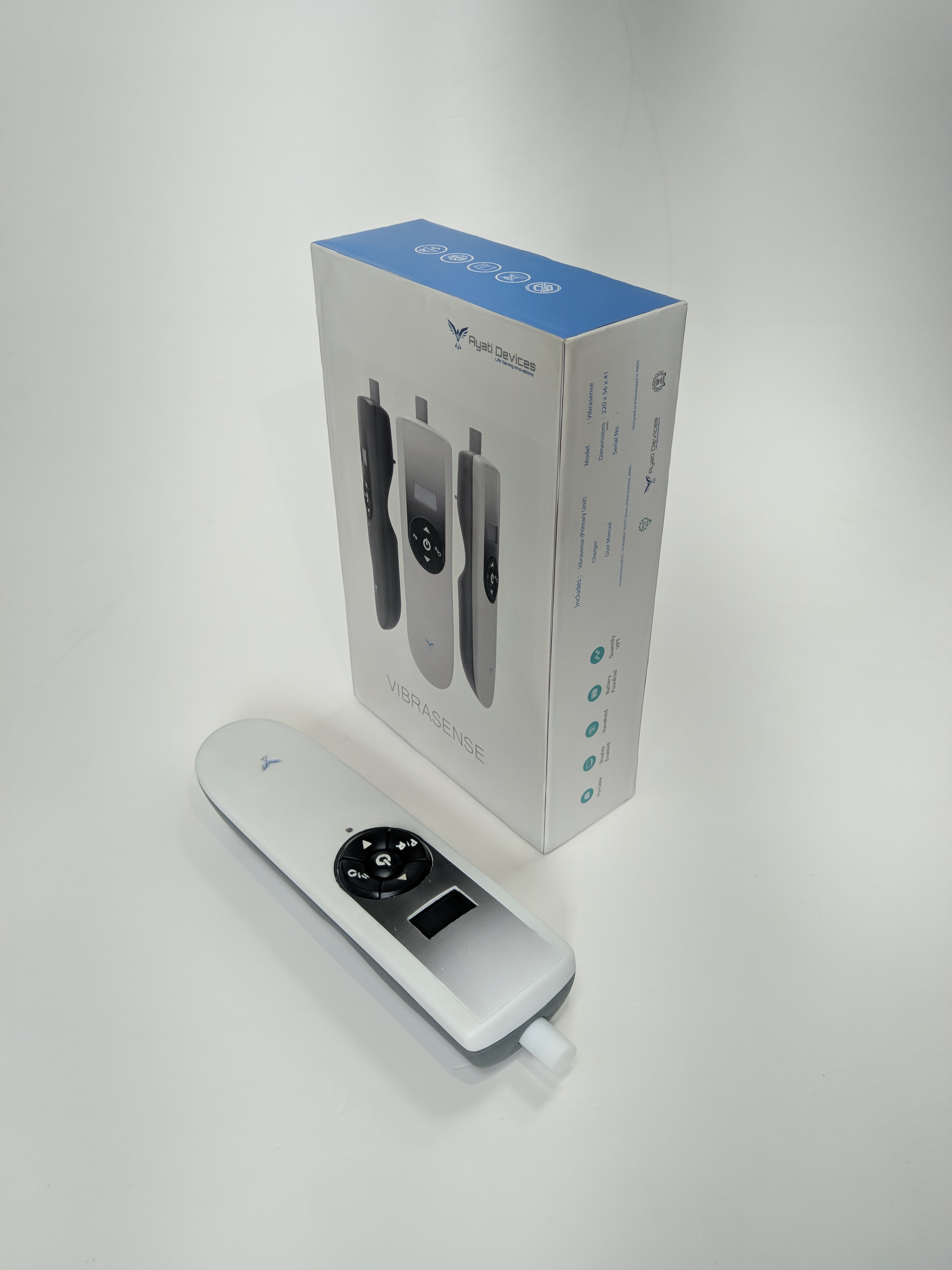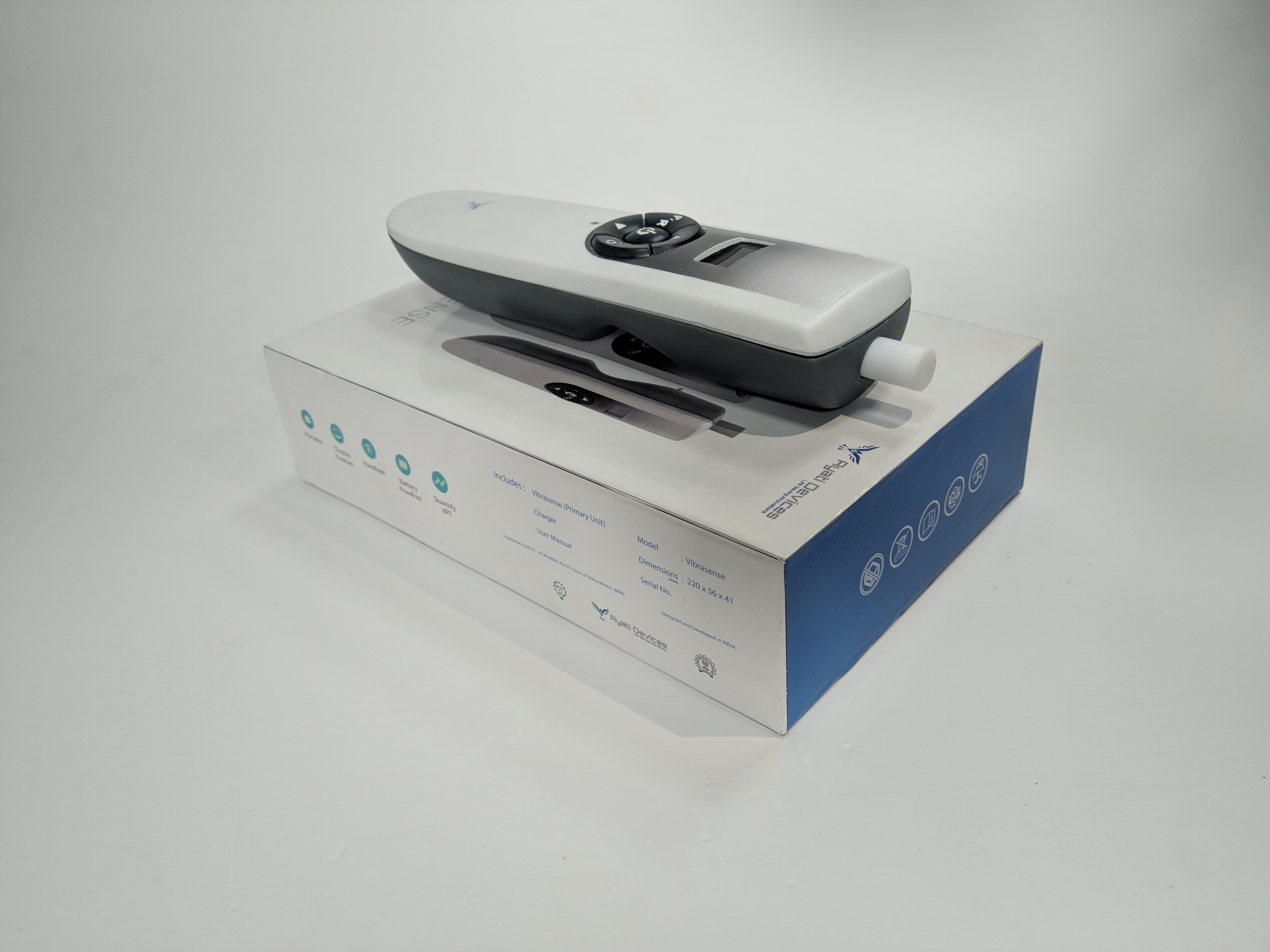A device for Screening of a Diabetic Foot
The technology introduces a smart device for screening diabetic foot, addressing the critical need for early detection of diabetic foot neuropathy and ulcers. This device integrates the assessment of touch, vibration, and temperature sensations into a single, automated unit, significantly reducing the time and subjectivity involved in traditional methods. Its objective analysis aims to prevent severe complications such as gangrene and amputations by facilitating timely and accurate diagnosis. By correlating plantar tissue stiffness with nerve responses, the device enables objective and rapid evaluation of diabetic foot neuropathy. The device's innovative approach enhances accessibility, especially in resource-limited settings, and reduces the reliance on highly trained specialists.
There is a lack of an effective and efficient method for early screening of diabetic foot neuropathy. This condition can lead to ulcers, gangrene, and even amputation if left undetected. Existing methods rely on subjective patient responses to individual tests for touch, vibration, and temperature perception, which are time-consuming, inaccurate, and require skilled clinicians. Additionally, current devices cannot evaluate all three parameters simultaneously and often rely on subjective patient feedback. This device can automatically, accurately, and rapidly assess diabetic foot neuropathy by objectively measuring plantar tissue stiffness and nerve responses to multiple stimuli, thereby enabling early detection and intervention.
- Simultaneous Multi-Stimuli Evaluation: It integrates pressure, vibration, and temperature stimuli application and sensing into a single unit for concurrent measurement.
- Portability and Accessibility: Portable design suitable for use in remote and resource-limited settings. It also reduces dependency on expensive and bulky diagnostic equipment.
- Efficiency and Accuracy: Simultaneously record sensory responses, enabling rapid and accurate screening and objective data collection, minimizing errors associated with human judgment.
- Multi-stimuli evaluation: Measures pressure, vibration, and temperature simultaneously for a more comprehensive picture.
- Objective nerve response: It uses a belt to record actual nerve signals, eliminating patient bias.
- Plantar tissue stiffness analysis: Measures foot stiffness using a controlled force, providing a more reliable indicator than touch tests.
- Automated operation: Simplifies testing by automating tasks, making it easier for practitioners.
- Targeted testing: Identifies high-pressure areas for precise data collection.
- Rapid results: Provides results in under 5 minutes.
- Risk classification: Categorizes patients into risk groups for faster intervention.
The device is designed for diabetic foot screening, aiming to detect neuropathy by assessing plantar tissue stiffness, vibration perception thresholds (VPT), and temperature perception thresholds (TPT). The device initially comprises a displaceable plate with dummy units to map high-pressure points on the foot. These dummy units are then replaced with load-vibration-temperature (LVT) units at identified pressure points. An indenting mechanism actuates the LVT units against the foot, while a nerve conduction belt records action potential signals. Each LVT unit integrates a load sensor, a linear actuator, a vibration actuator and sensor, and a temperature actuator and sensor, enabling the simultaneous application and measurement of all three stimuli. It can quantify tissue stiffness by correlating applied force with measured displacement. Similarly, VPT and TPT are determined by analyzing action potential signals in response to controlled vibration and temperature changes. The device processes these signals to classify the patient's neuropathy risk as "danger" (red), "alert" (orange), or "normal" (green), offering an automated, objective, and rapid assessment compared to traditional subjective methods.
The technology has the potential to significantly impact the lives of millions globally who are at risk for diabetic foot ulcers and their associated complications. By integrating pressure, vibration, and temperature stimuli into a single, automated device, the invention offers a rapid and objective method for screening diabetic foot neuropathy. It is a significant advancement over current subjective and time-consuming diagnostic methods. The device's ability to accurately detect early signs of neuropathy could lead to timely intervention and preventative care, reducing the incidence of foot ulcers, infections, amputations, and the substantial healthcare costs associated with these conditions. Furthermore, the device's portability and ease of use make it suitable for deployment in remote areas with limited access to specialized healthcare, potentially reducing healthcare disparities.
The technology aims to detect the onset of diabetic foot ulcers, a common complication of diabetes that can lead to amputation if left untreated. While its primary application lies in diabetology and podiatry, the core technology, centered around measuring nerve responses to various stimuli, could be adapted for other conditions, such as peripheral neuropathy.


